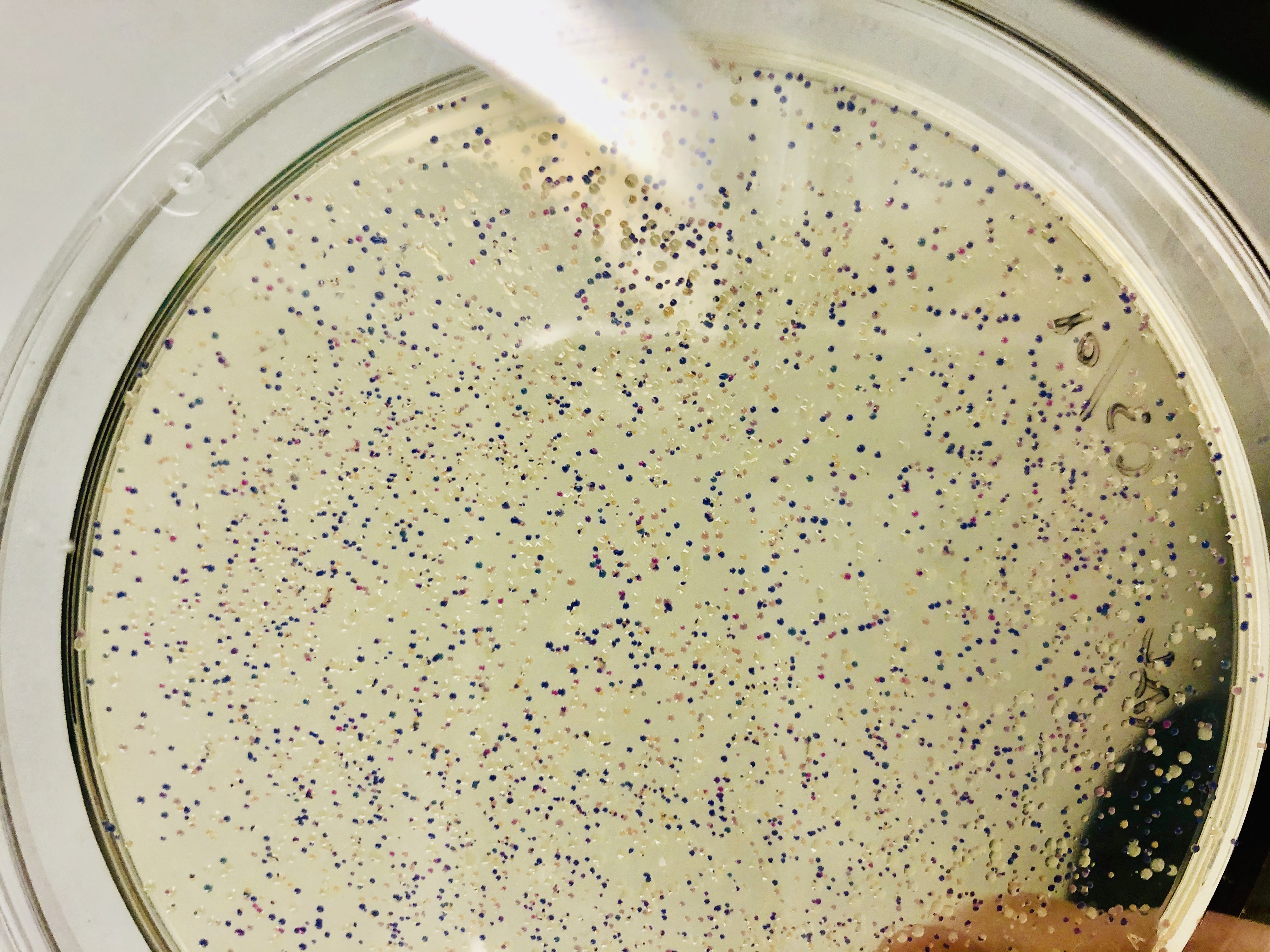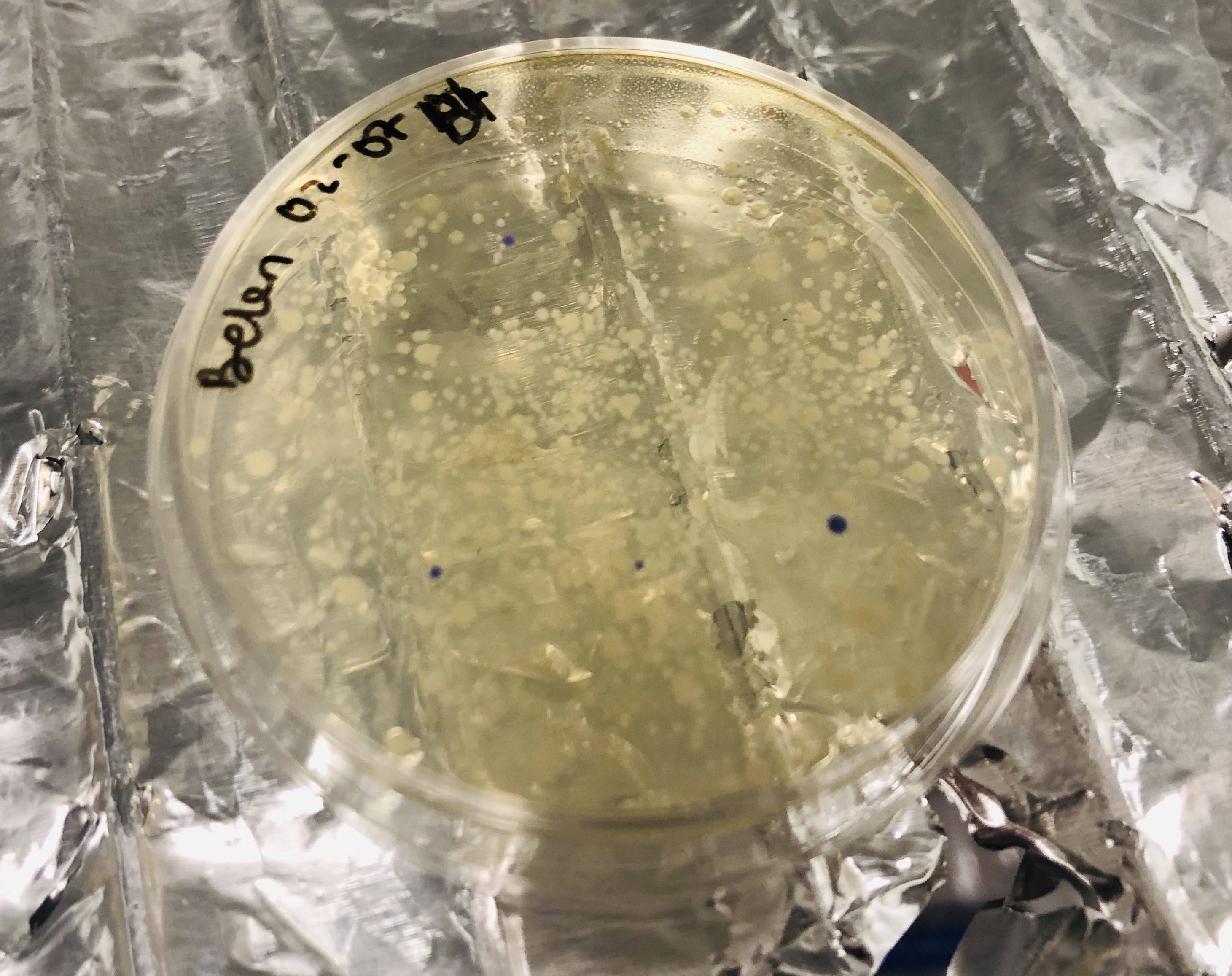Week 5: Next Generation Synthesis
Part A: Preparing backbone and chromophore insert
1. pUC19 cut with PvuII
We digested the pUC19 plasmid to generate a backbone where we will insert our chromophore gene.
2. Extract muAV plasmid
Then we mini-prep the mUAV plasmid from overnight cultures obtaining 2 samples of 28.7 and 25.4 ng/ul3. Design primers for muAV PCR
In the mUAV plasmid, we wanted to identify the regions of the gene that we needed: promoter, RBS, coding sequence, terminators. The promoter was not annotated in Benchling, so I did a blast to find it
For the first amplicos, we want to generate a FW primer that contains the region in pUC19 right before the PvuII cut in bp 54 and the first nucleotides of the promoter in the chromophore gene in mUAV The reverse primer will be formed by bps before the chromophore region
For the second amplicos, we want to generate a FW primer that contains the 24bp before the chromophore region, the mutated chromophore region and some extra bp after that
The reverse primer will be formed by last bps of the terminator and beyond appended to 17bp right afther the PvuII cut in pUC19(after 377)
4. Generate amplicons through PCR
Once we have our primers, we can perform a PCR to amplify the specific gene fragments that we want, and introduce substitution in the chromophore sequence

